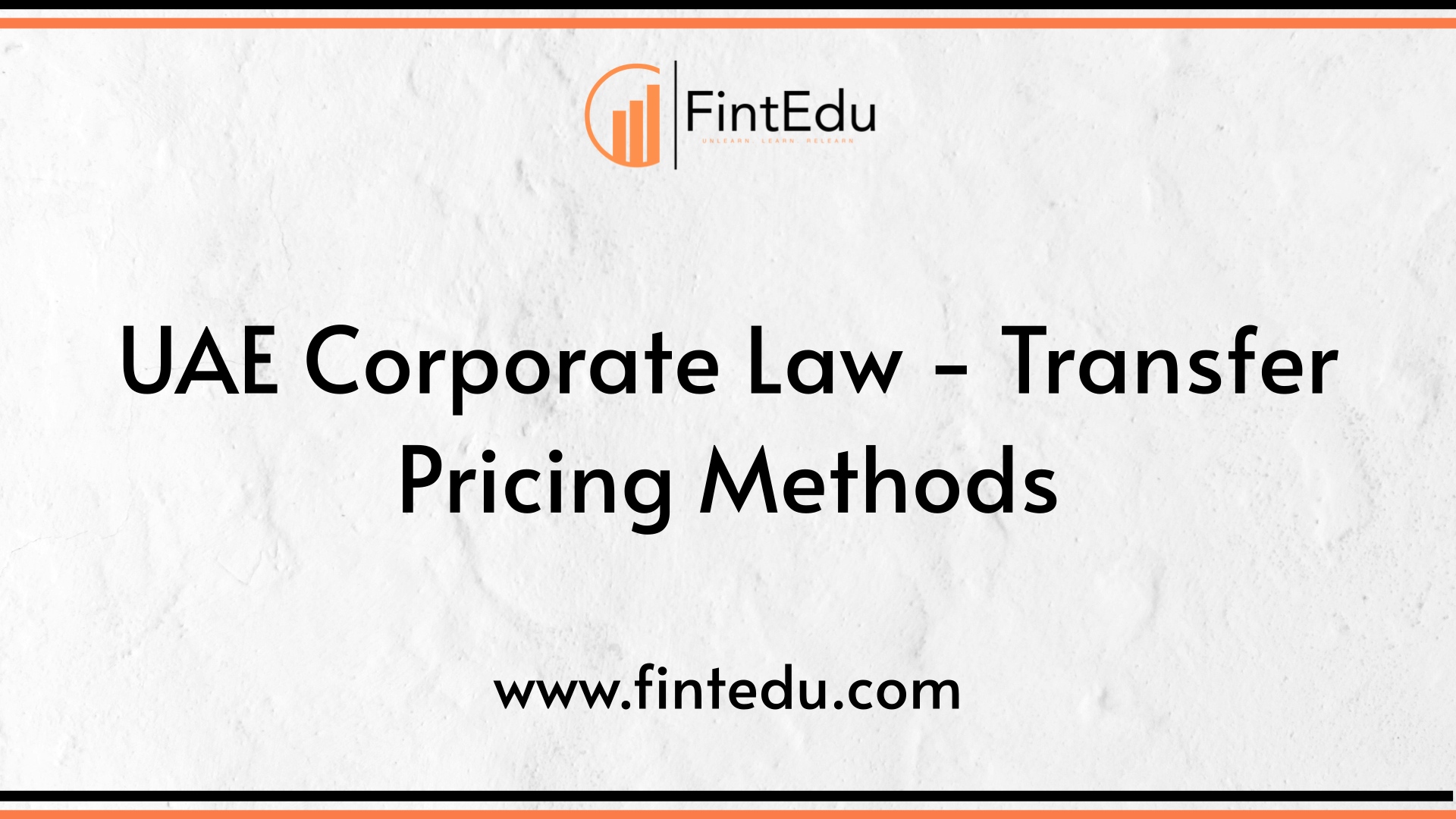LISTEN TO THIS ARTICLE
Transfer pricing plays a pivotal role in global business operations, particularly for multinational enterprises (MNEs) transacting with related parties / connected persons. These companies often have to determine the arm’s price of goods, services, intellectual property, or financial transactions across different jurisdictions. With tax authorities focusing on profit allocation and tax base erosion, understanding transfer pricing methods has become essential for compliance.
In this article, we will discuss the five transfer pricing methods and their application as recommended by the OECD and internalised under Article 34(3) of the UAE Corporate Tax Law. The UAE Transfer Pricing Guide discusses these methods in depth with practical examples.
Comparable Uncontrolled Price Method
The Comparable Uncontrolled Price (CUP) method is perhaps the most straightforward of all transfer pricing methods. It compares the price charged for goods or services in a controlled transaction (between related parties) to the price charged in a comparable uncontrolled transaction (between independent parties). If the transactions are similar, the price charged in the uncontrolled transaction can serve as a benchmark.
The key to this method's success lies in finding accurate comparable transactions. Thus, it might not be the most appropriate method to benchmark transactions involving intangibles, which may be unique in nature.
Resale Price Method
The Resale Price Method (RPM) focuses on determining the price at which a product is purchased from an associated enterprise and resold to an independent party. The resale price is then reduced by an appropriate gross margin to arrive at the transfer price. This method is often used in cases where goods are purchased from a related entity and then resold to third-party customers.
This method is widely used for entities engaged in trading of goods without significant value addition before resale.
Cost Plus Method
The Cost Plus Method (CPM) adds a markup to the costs incurred by the supplier of goods or services in a controlled transaction. This method is typically used when a company sells goods or provides services primarily to a related party, i.e., to a captive manufacturer or service provider. The markup reflects the return that independent companies would expect from performing similar services or selling similar goods.
Transactional Net Margin Method
The Transactional Net Margin Method (TNMM) evaluates net profit relative to an appropriate base (such as sales, assets, or costs) that a business earns from a controlled transaction. This method compares the net margin of the controlled transaction to that of similar transactions between independent entities. The TNMM is widely used in practice due to its flexibility and the availability of data for comparison.
Often, segmental data is also used under TNMM if the comparable is engaged in multiple segments.
Profit Split Method
The Profit Split Method (PSM) allocates the combined profit earned from inter-company transactions based on the relative contributions of each party involved. This method is often applied in cases where both parties contribute significantly to a unique product or service, such as joint ventures involving intellectual property. The profit split method ensures that each party is compensated fairly based on their respective contributions to the value creation process.
Other Method
The UAE law provides that if the aforesaid five methods cannot be applied, the taxpayer may choose to apply any “other method” which can be considered appropriate. For instance, the discounted cash flow method may be used as the “other method”.
Choosing the Most Appropriate Method
Selecting the most appropriate method (MAM) depends on several factors, including the type of transaction, functions, assets and risk (FAR) analysis, the availability of reliable comparables, the complexity of the business operations etc.
Regardless of the method selected, it requires extensive documentation to substantiate the MAM and the methods rejected. Such well-maintained documentary evidence is crucial and supports at the time of assessments.
Conclusion
The subject of transfer pricing is a complex subject. It is prone to litigation worldwide. Hence, it is important to understand and apply the correct transfer pricing method. Equally important is the ability to substantiate the method chosen and those rejected.
Disclaimer: Content posted is for informational and knowledge sharing purposes only, and is not intended to be a substitute for professional advice related to tax, finance or accounting. The view/interpretation of the publisher is based on the available Law, guidelines and information. Each reader should take due professional care before you act after reading the contents of that article/post. No warranty whatsoever is made that any of the articles are accurate and is not intended to provide, and should not be relied on for tax or accounting advice.
Contributor
Related Posts

@@PLUGINFILE@@/ttsmaker-file-2025-10-30-17-20-25.mp3Listen to this ArticleWhy Ignoring Extra Checks ...
Read More
Oman, 29 October, 2025 : Oman’s Tax Authority has postponed the rollout of Digital Tax Stamps...
Read More
@@PLUGINFILE@@/ttsmaker-file-2025-10-27-12-26-39.mp3Listen to This ArticleA Major AML Compliance Gap...
Read More